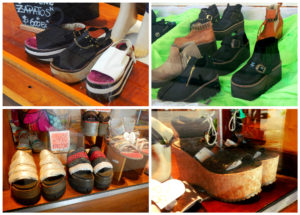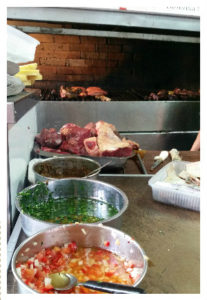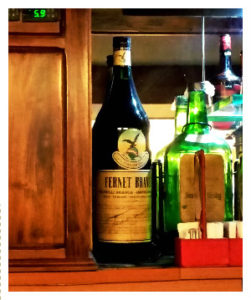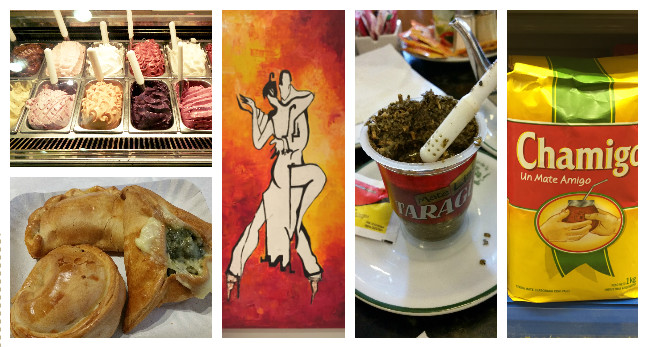- Argentinian Spanish has a unique accent that has developed in part from the high percentage of Italians that migrated here (over 40% of the current population has Italian heritage!). Instead of pronouncing a “y” in words like “yo” or “llevar,” there’s much more friction and it sounds like a “j.” When I said “Murillo” with a “y” sound a taxi driver looked at me blankly until I showed him the address on my phone. “Ah, mu-ri-jo!” he pronounced slowly, correcting me. They are also specific in referring to the language as Castellano, rather than the broader term Español, that we’re used in the US.
- Buenos Aires is a late-night city. Common breakfast items include croissants and pastries with coffee, lunch around 3 or 4, and dinner at 10pm! A perfect schedule for late nights tango-ing at a milonga, which can go on ’till 5 in the morning.
- Closed-door restaurants and bars continue to be popular. Originating during the economic crisis, these are often in actual houses and need prior arrangement in order to partake.
- There are two currency exchange rates, also stemming from the economic crisis: the “official” rate and the blue dollar rate, both of which are endorsed by the government. There’s even a twitter account for the blue dollar! In tourist-laden areas it’s common to hear folks yelling “cambio” and offering the blue dollar rate. These exchanges are operate outside financial institutions, in both senses. They’re currently pretty similar rates, but in the past have diverged by as much as as a 70% difference.
 Excessively tall platforms are excessively popular.
Excessively tall platforms are excessively popular.- Mate, a strong and bitter tea, is a common drink and social experience. Many folks carry around their mate, or drinking gourd, and thermos filled with hot water. Pour hot water in a gourd filled with mate leaves, drink, refill, and then pass it to a friend.
- Taxis abound, and they’re pretty reasonable compared to the US. I read in a guidebook that there are more taxis in Buenos Aires than in New York! One of the taxi drivers we met mentioned that there are 38,000 licensed drivers in the city (and there are likely many more than that actually driving around). We were also told that after the economic crisis many people resorted to becoming taxi drivers to pay the bills and many stayed there, meaning that you can find drivers with all sorts of professional backgrounds. Imagine going from engineer/banker/etc to taxi driver! They are also adamant about protesting Uber, which recently launched here; many have window signs saying “Fuera Uber” and they’ve blocked many a street in protest.
- Protests are an everyday thing here.

Figure of current president, Macri, during a giant protest of the current government that blocked off streets in the Puerto Madero. area - Anti-American sentiment is also a thing here. Many blame the US for supporting the Argentinian dictatorship that caused civil rights violations and disappearances.

Left to right: posters up around the time of Obama’s visit, magazine cover, graffiti near Recoleta Cemetery and Teatro Colón. - Heladerías, or ice cream shops, are on nearly every block. Most deliver and many are open till 1am! To order, you pay for it first and then choose your flavor.
- Speaking of delivery, most grocery stores will deliver your goods to you, either free, or for a nominal fee (~30 pesos or so).
 If you like steak and grilled things (meats, sweetbreads, veggies, cheese, pizza), this is a great place for you. Nice apartments will have a quincho, or a grill/patio area just for this. Don’t expect your steak to be marinated or seasoned much before it arrives to you, but there are plenty of sauces to eat your grilled proteins with. Salt shakers are common but pepper, not so much.
If you like steak and grilled things (meats, sweetbreads, veggies, cheese, pizza), this is a great place for you. Nice apartments will have a quincho, or a grill/patio area just for this. Don’t expect your steak to be marinated or seasoned much before it arrives to you, but there are plenty of sauces to eat your grilled proteins with. Salt shakers are common but pepper, not so much.- Empanadas are also everywhere. They come with all sorts of fillings like beef, chicken, ham/cheese, spinach/cheese, humita (a sweet corn mixture), caprese and more. Though baked empanadas are more common in Buenos Aires, they can also be fried. Often the shape of the empanada can give you clues to the filling. I think my favorite empanada I had while here was the baked chicken empanada we made during our cooking class.
- With the large number of Italians, there are many shops specializing in fresh pasta.
 Fernet + coke is the national cocktail. Very licorice-y, it’s an acquired taste.
Fernet + coke is the national cocktail. Very licorice-y, it’s an acquired taste.- Dulce de leche (DDL) is everyone’s favorite topping, going in the always-popular alfajor, croissants, and anything else you can imagine. Heladerías often have a whole section of the cold case dedicated to DDL flavors!
- The city has an old-european feel. Many of the buildings are old (with beautiful facades!). But it can also mean antiquated elevators, the kind with two sets of doors to open/close, thin walls, and audible plumbing.
- High chance you’ll find smoke and cigarettes when you step outside.
 Keys are most often the cool kind with big teeth. In all 4 of the places we stayed, this was the type of key to the apartment. Occasionally the key to the building entrance was different (metal piece with indentations). Didn’t see any keys with jagged edges common in the US.
Keys are most often the cool kind with big teeth. In all 4 of the places we stayed, this was the type of key to the apartment. Occasionally the key to the building entrance was different (metal piece with indentations). Didn’t see any keys with jagged edges common in the US.
Got any other idiosyncrasies I missed?

Thanks for the cultural insights! Never knew Italians played such a historical role.